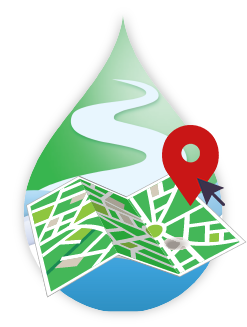1) Sources of Drinking Water
Only 2.5% of the Earth’s water is freshwater. While freshwater is mostly locked up in ice and stored underground, only 1.2% of it is surface water. Rivers, where we get water from, make up 0.49% of surface freshwater (USGS, 2016).
In Hong Kong, water from river catchments is collected and stored in reservoirs in order to supply drinking water for municipal uses. Local yields satisfy about 20-30% of Hong Kong’s total freshwater demand.
The composition and distribution of the Earth’s water
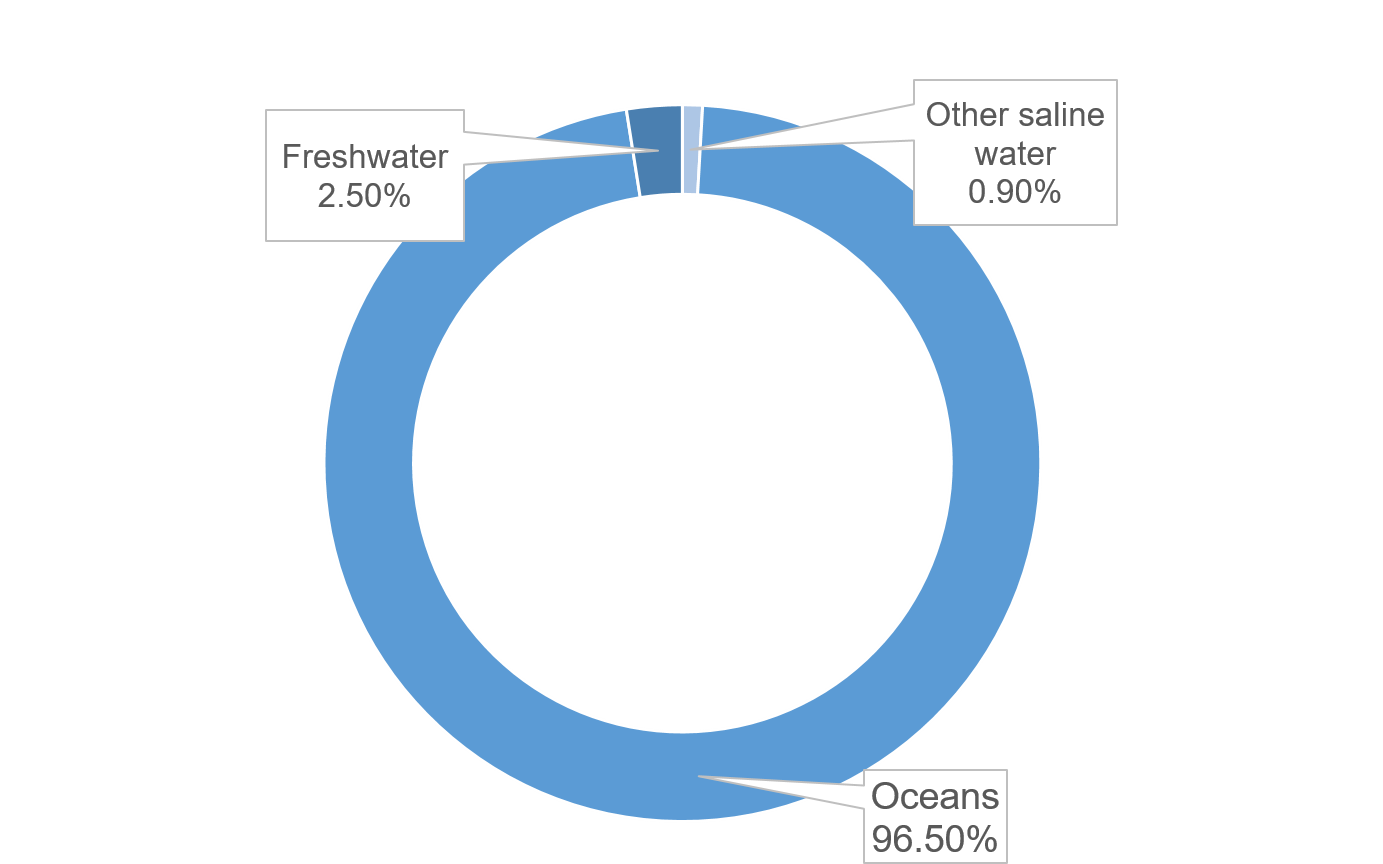
Freshwater
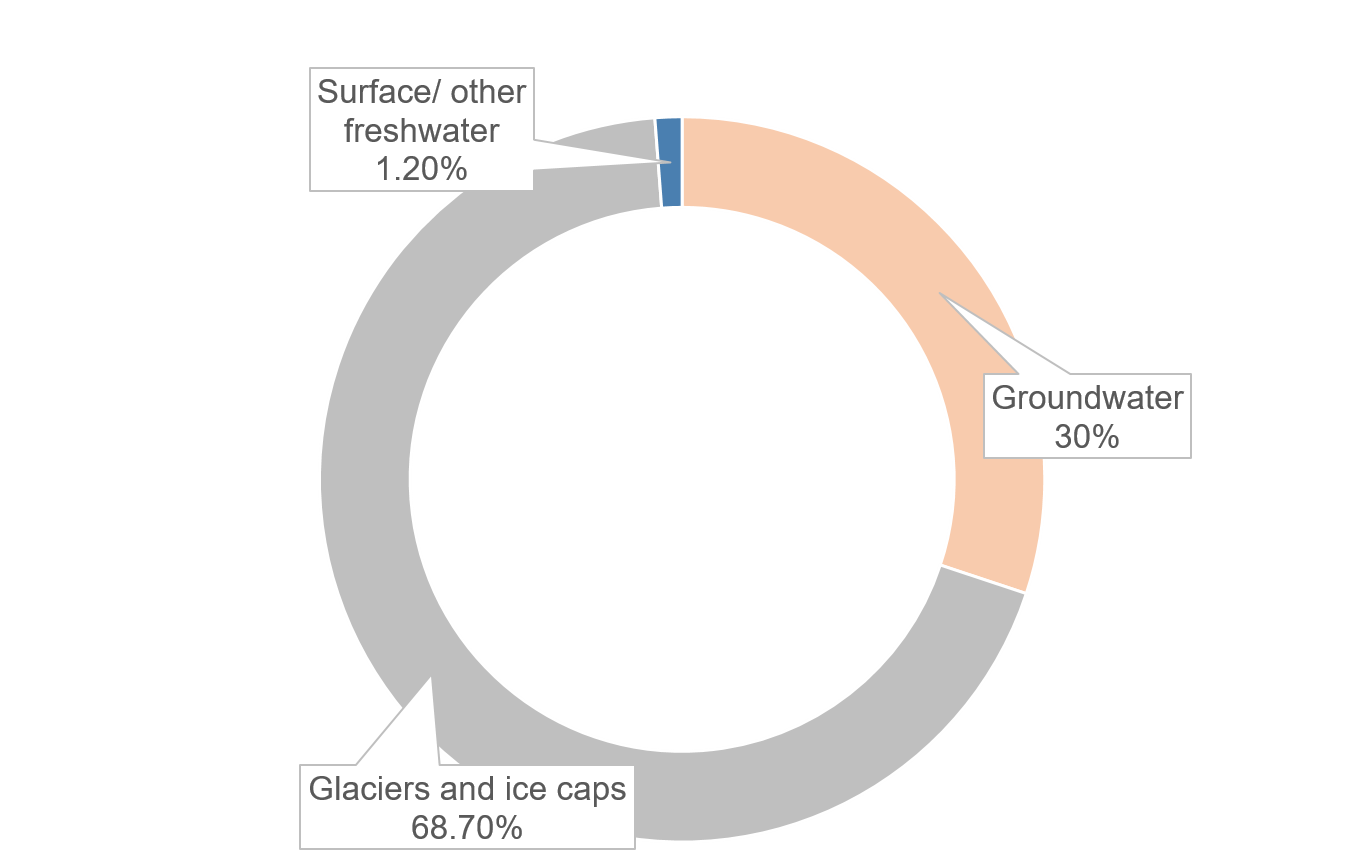
Surface Water and other freshwater
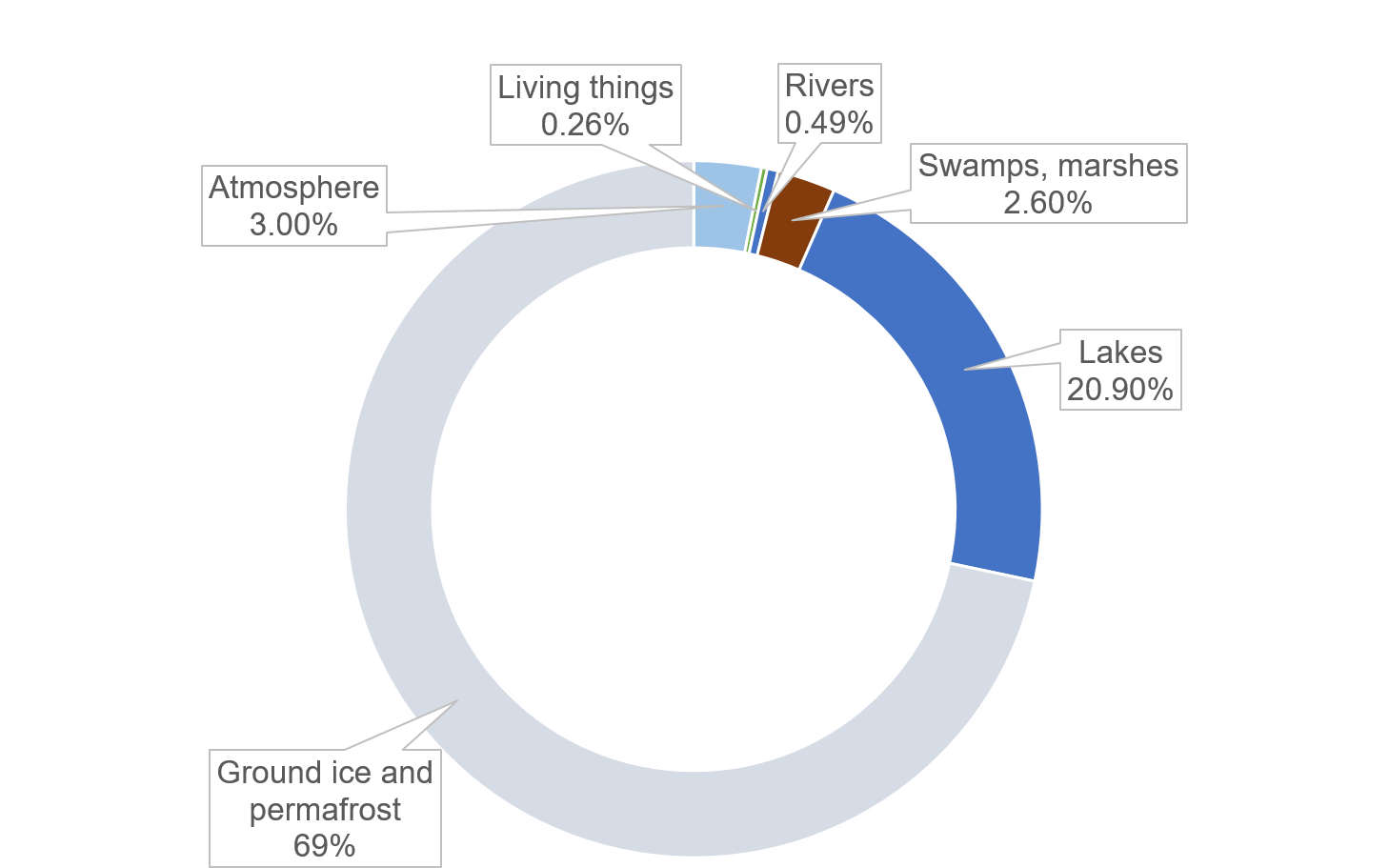
(Source: Shiklomanov, I. A., & Rodda, J. C. (2003). World water resources at the beginning of the twenty-first century. Cambridge, UK: Cambridge University Press.)
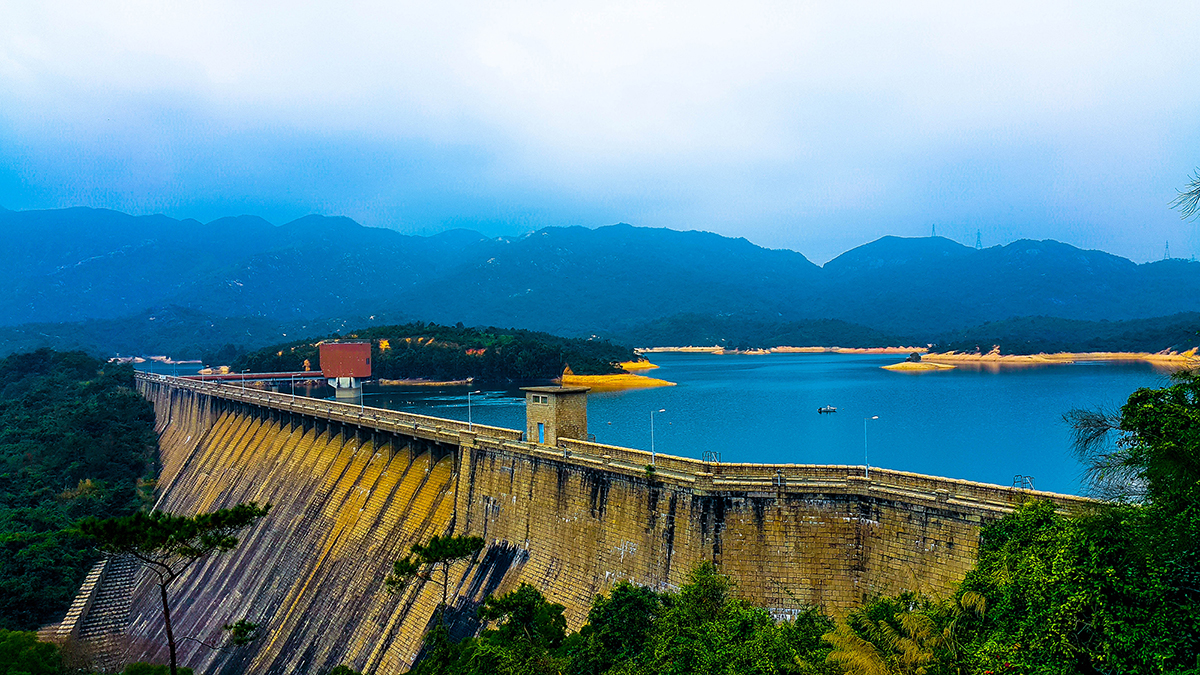
Tai Lam Chung Reservoir
2) Agriculture and Fisheries
Rivers support agriculture and fisheries. Freshwater from rivers is an important source of irrigation water. In Hong Kong, eight irrigation reservoirs were built in the 1950s and 1960s by the government to gather river water. Nowadays, farmers still utilize river water to grow vegetables and flowers, while in Lai Chi Wo, farmers utilize river water to grow rice paddy.

Rivers support a diversity of aquatic lives and there is a long history of humans to harvest fish in rivers as an important source of protein. In addition, estuaries also offer a suitable location for aquaculture.
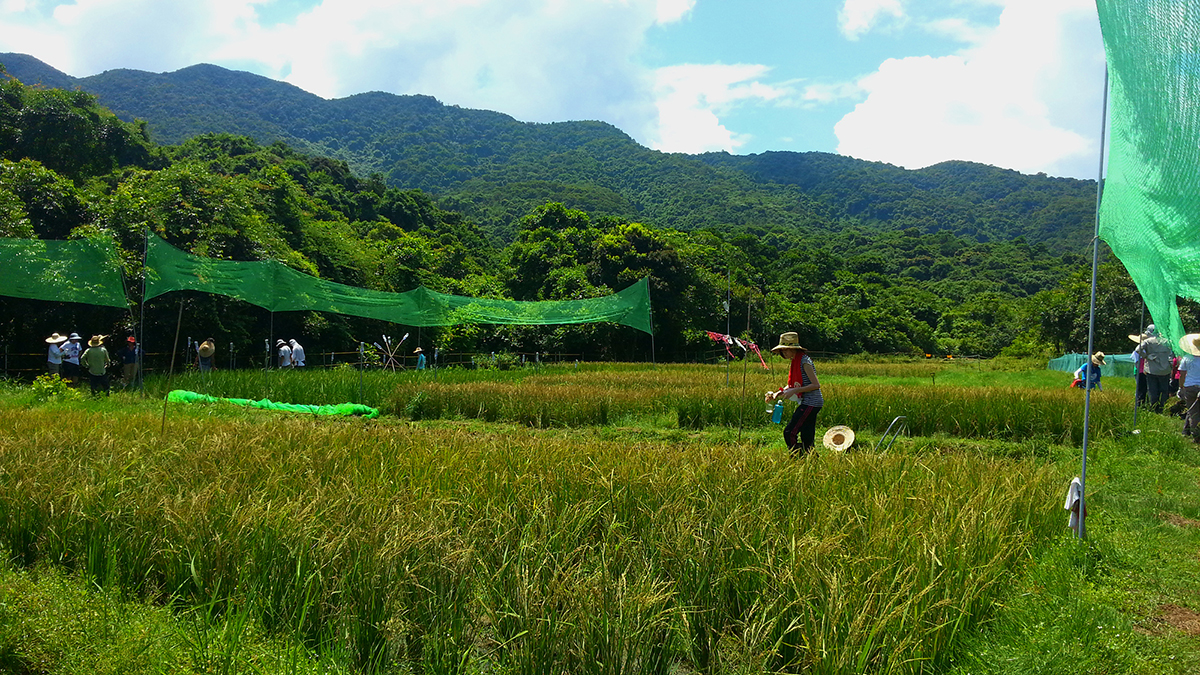
Rice paddy field at Lai Chi Wo
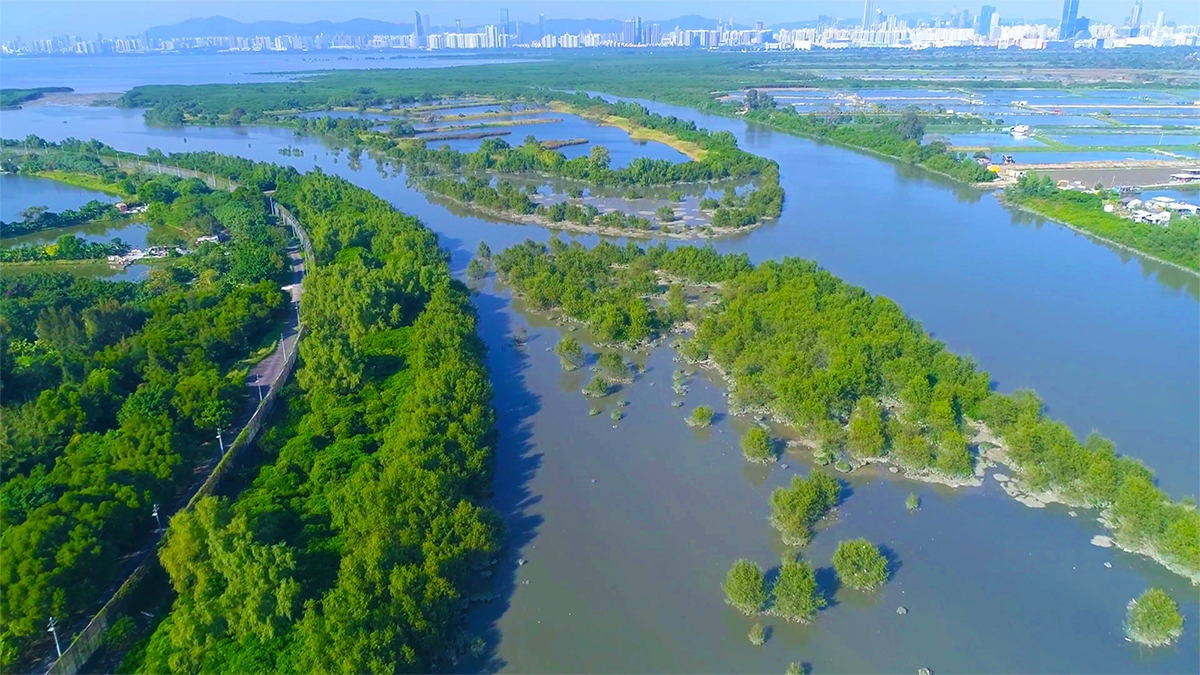
Fishponds near Shan Pui River
3) Navigation
Rivers connect people and places. Many large rivers, such as the Yangtze River in China and the Mississippi River in the United States, serve as major navigation routes. In general, rivers in Hong Kong are too shallow for transportation. Notwithstanding, a river-crossing ferry can still be found in Nam Sang Wai.

River-crossing ferry at Nam Sang Wai
4) Hydroelectricity
16.4% of world’s electricity is generated by hydropower (World Energy Council, 2016). Many major hydroelectric power stations are built along large rivers. The annual electric energy production of the Xinfenjiang Reservoir (新豐江水庫) at Heyuan (河源) in Guangdong, is up to 0.9 billion kwh (Jiang, 2009).
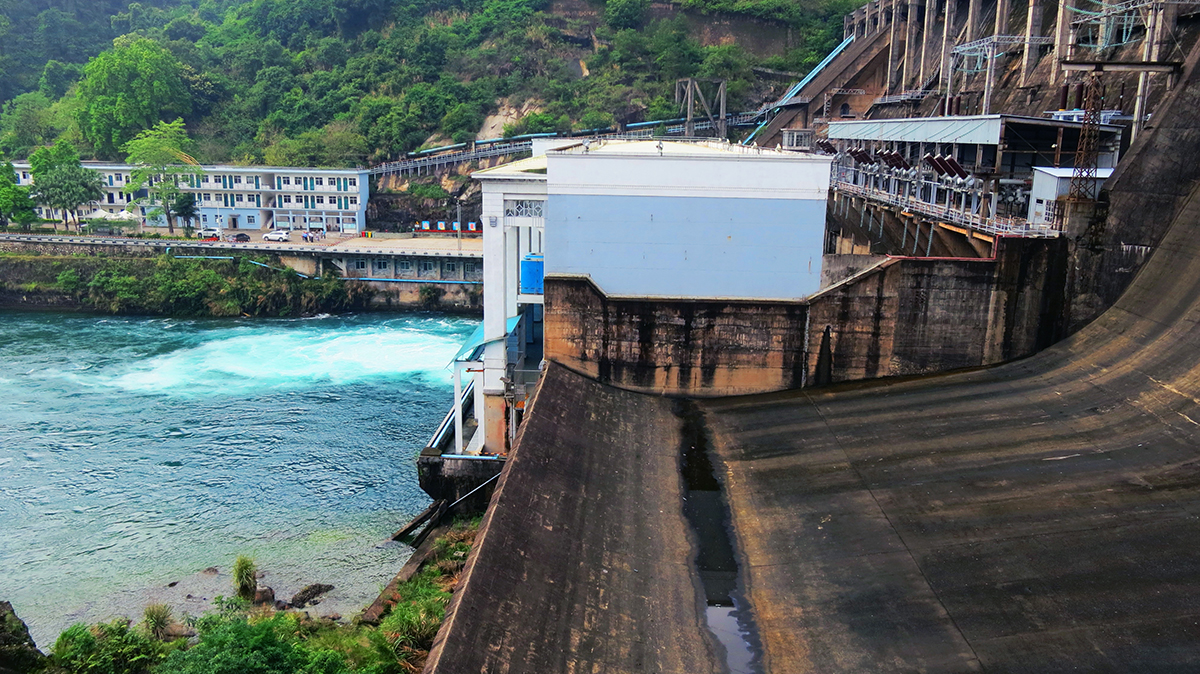
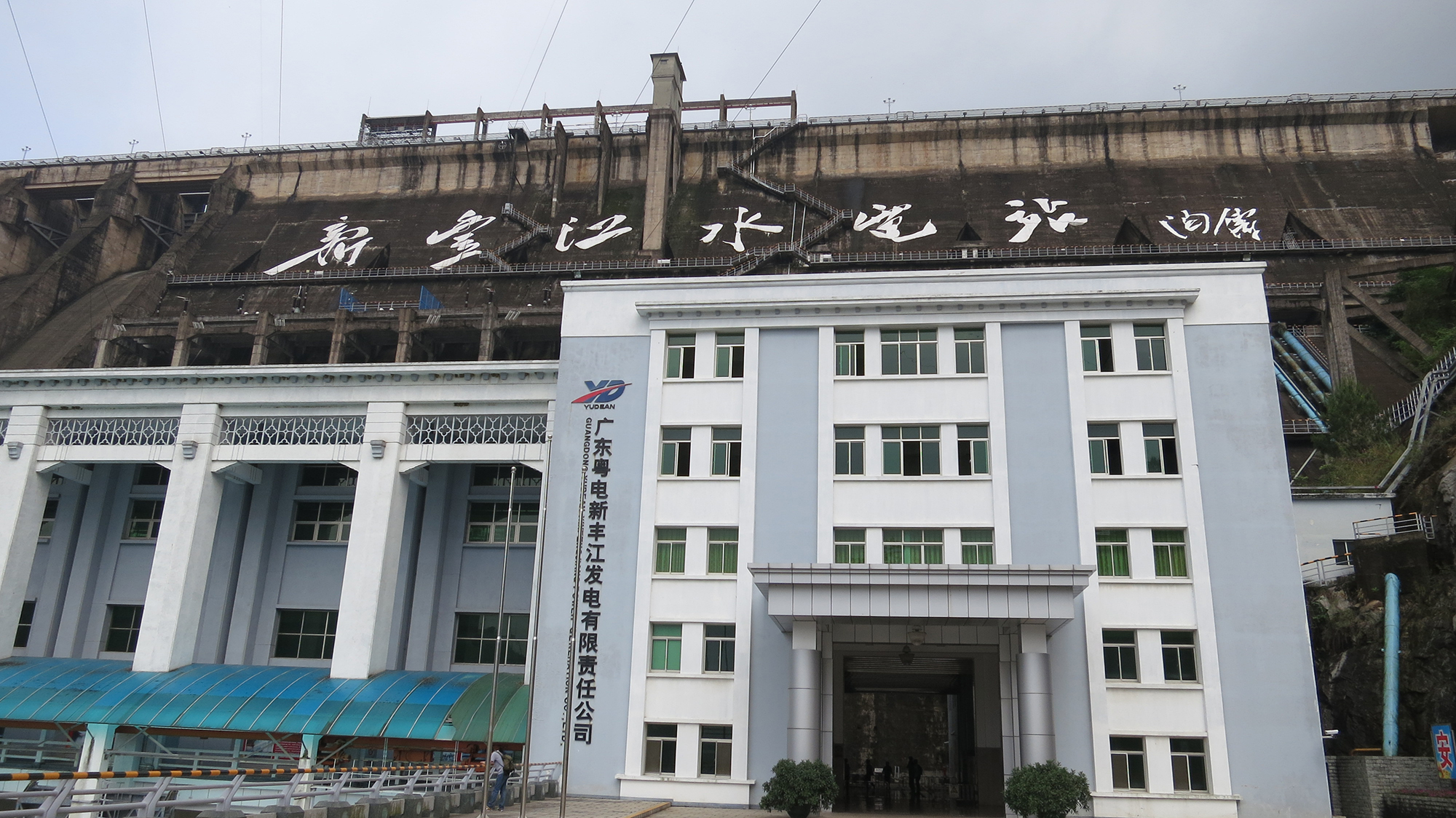
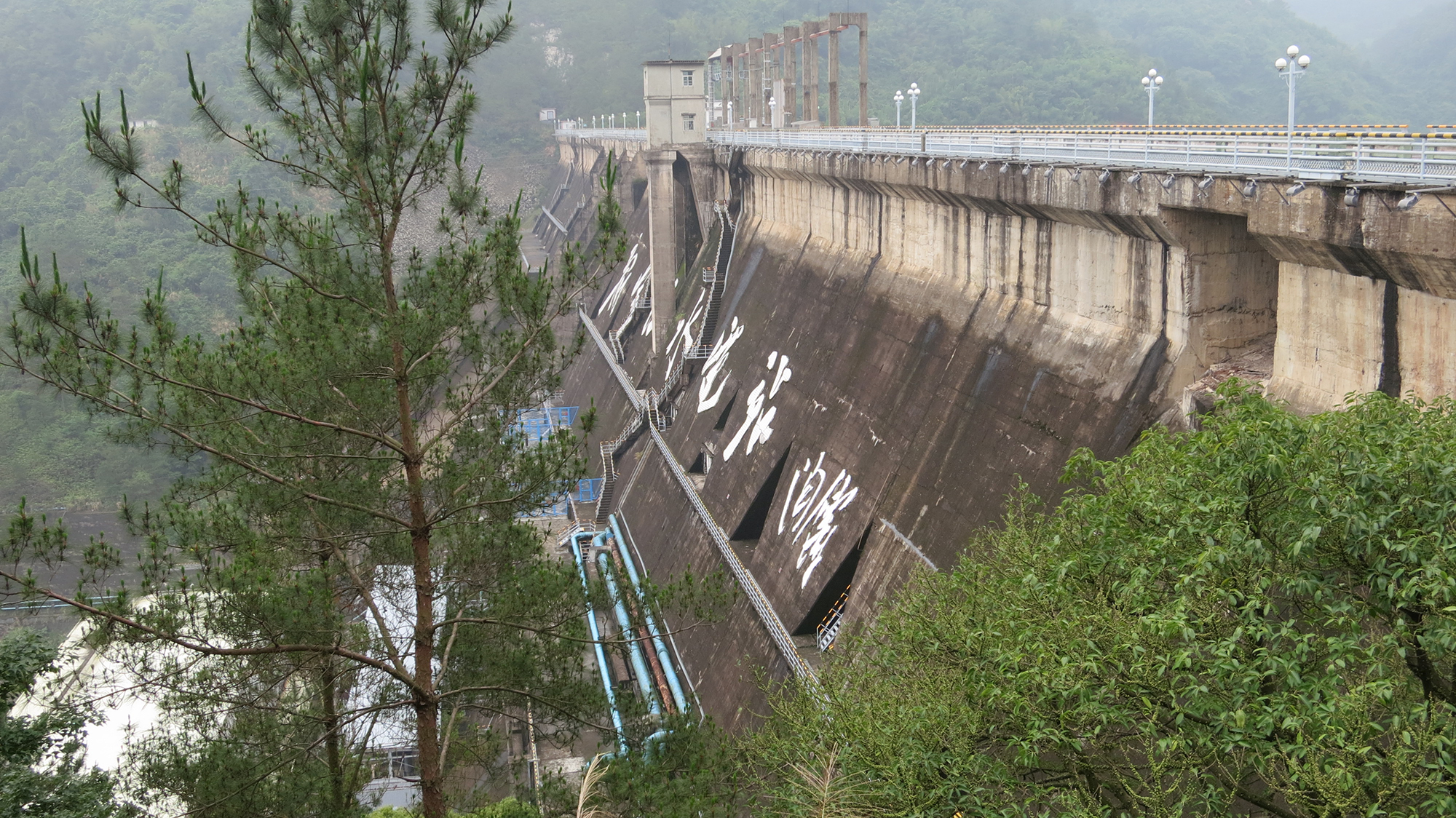
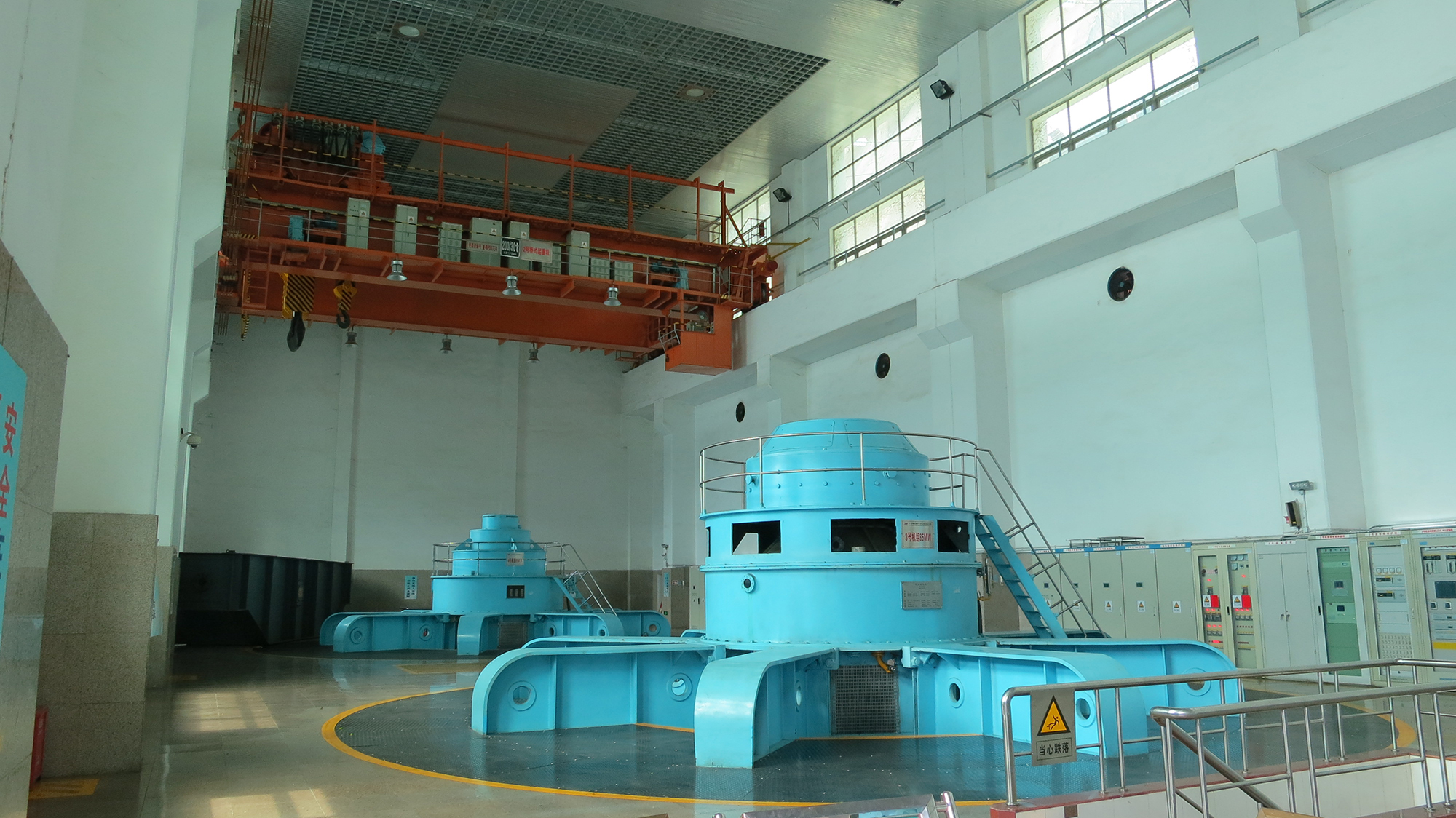
Hydropower plant at Xinfenjiang Reservoir, Guangdong
5) Ecological Function
In particular, the intertidal mudflat and mangrove ecosystem at the river mouth may support a great diversity of birds and invertebrates.
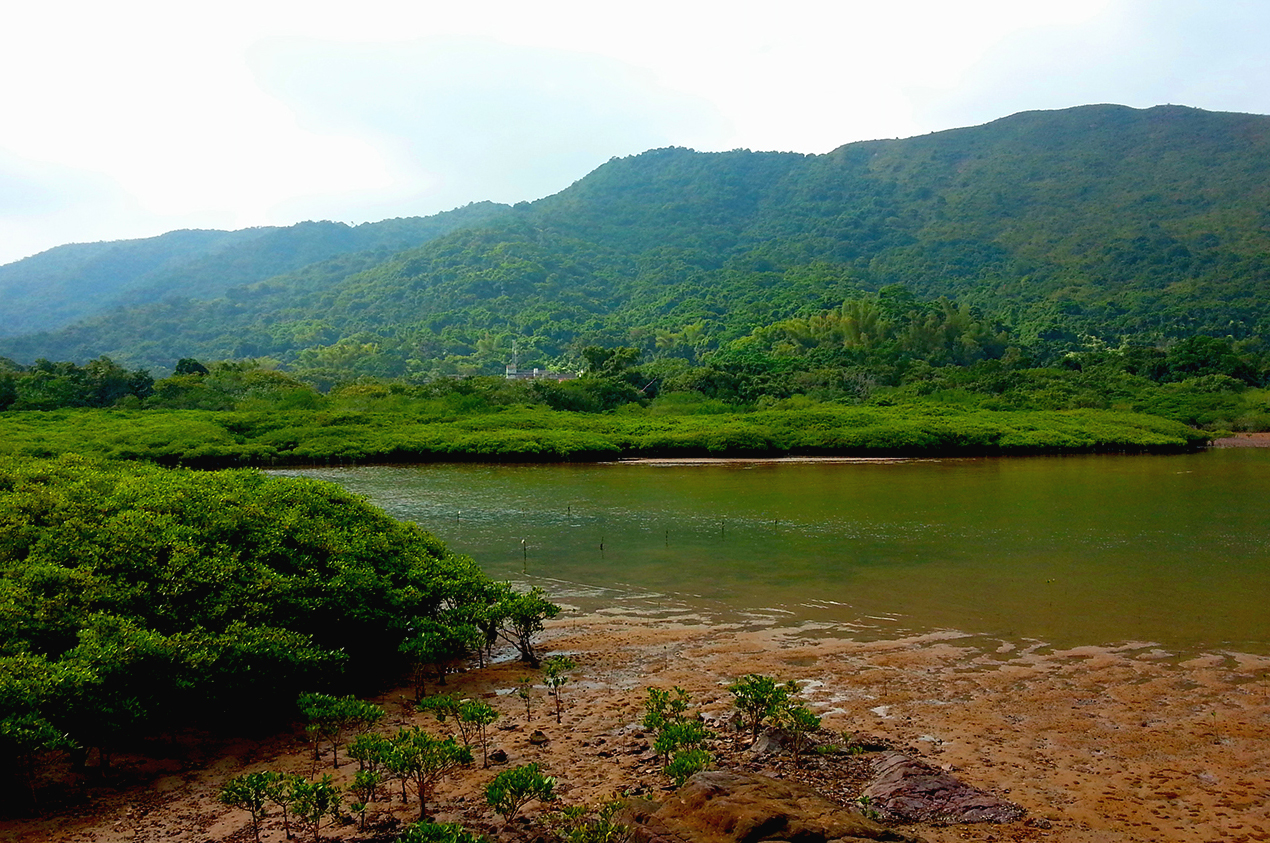
Mangroves at the estuary
Perisesarma bidens (雙齒近相手蟹)
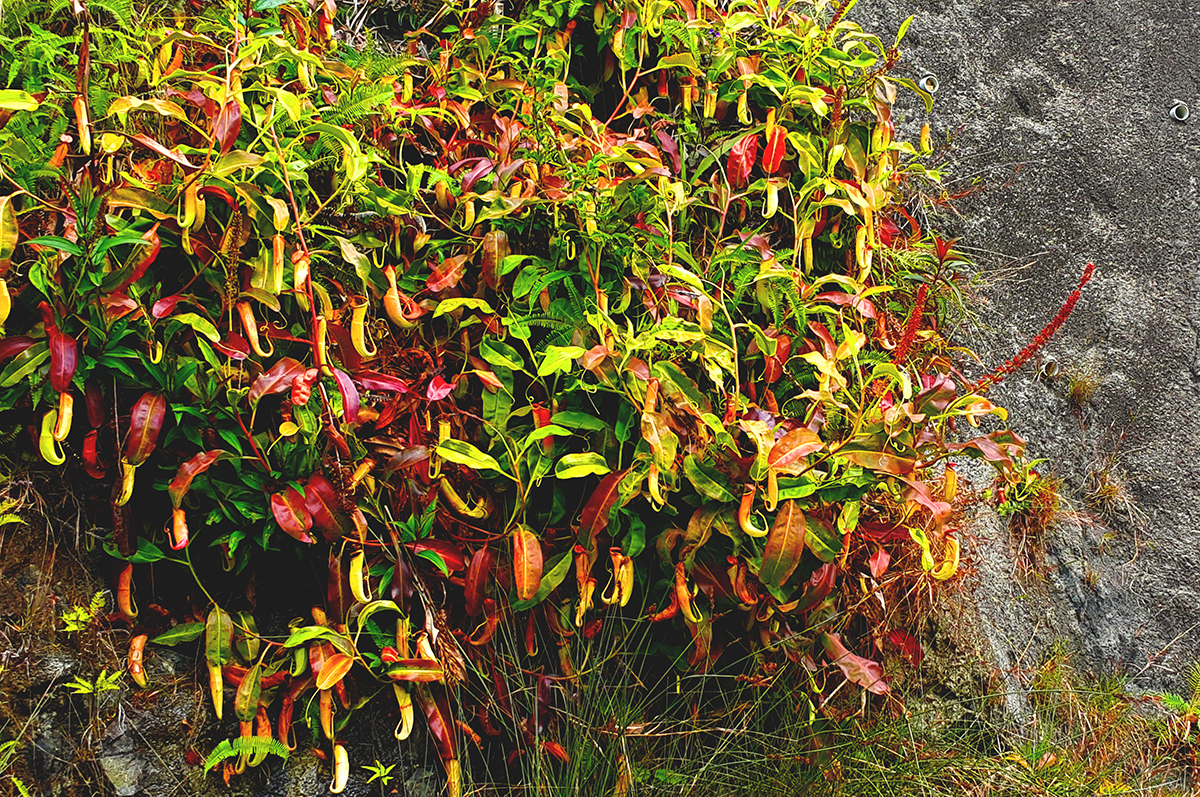
Pitcher Plant (豬籠草)
Migratory wetland birds
6) Recreation
Rivers provide open space for different types of leisure and recreational activities, such as wildlife photography, fishing, cycling and sightseeing.

Wildlife photography at Long Valley

Cycling at Nam Sang Wai
7) Cultural Heritage
For centuries, human settlements and communities have sprang up along the rivers. Numerous historic buildings can be found along rivers. Examples in Hong Kong are as follows:
Bin Mo Kiu (便母橋), Kam Tin River
Lai Chi Wo Hakka-walled village, Lai Chi Wo River
Tai Shu Ha Tin Hau Temple (大樹下天后古廟), Shan Pui River
Chau Wong Yi Kung Study Hall (周王二公書院), Kam Tin River
I Shing Temple (二聖宮), Shan Pui River [declared monument]
Sources of Drinking Water
Only 2.5% of the Earth’s water is freshwater. While freshwater is mostly locked up in ice and stored underground, only 1.2% of it is surface water. Rivers, where we get water from, make up 0.49% of surface freshwater (USGS, 2016).
In Hong Kong, water from river catchments is collected and stored in reservoirs in order to supply drinking water for municipal uses. Local yields satisfy about 20-30% of Hong Kong’s total freshwater demand.



(Source: Shiklomanov, I. A., & Rodda, J. C. (2003). World water resources at the beginning of the twenty-first century. Cambridge, UK: Cambridge University Press.)
